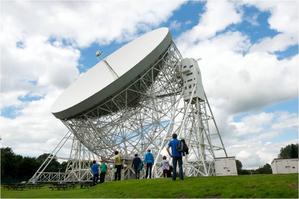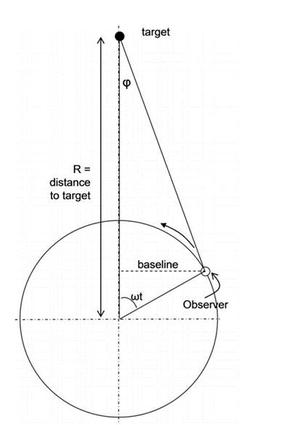Glossary term: Télescope
Description: Un télescope est un dispositif qui collecte les photons (de la lumière visible ou d'autres longueurs d'onde) d'objets éloignés et fournit des informations (par exemple une image) à leur sujet à un observateur. Les premiers télescopes (à partir du début du 17e siècle) utilisaient des lentilles comme éléments optiques (voir télescope réfractaire). Les lentilles étant limitées dans leur taille, pour voir des objets moins lumineux avec plus de détails avec des télescopes plus grands, on a utilisé des miroirs (voir télescope réflecteur) pour focaliser la lumière. Les plus grands télescopes optiques sont des télescopes à réflexion. Au XXe siècle, des télescopes permettant d'étudier d'autres régions du rayonnement électromagnétique ont été inventés. Il existe donc aujourd'hui des radiotélescopes, des télescopes infrarouges, des télescopes à rayons X, etc. Les sources célestes étant peu lumineuses, les astronomes ont tendance à construire des télescopes à grande ouverture pour collecter plus de lumière et atteindre des résolutions angulaires plus fines.
Related Terms:
- Electromagnetic Radiation
- Télescope infrarouge
- Radio Telescope
- Télescope à réflexion
- Refracting Telescope
- Angular Resolution
- Télescope à rayons X
- Lentille
- Mirror
See this term in other languages
Term and definition status: The original definition of this term in English have been approved by a research astronomer and a teacher The translation of this term and its definition is still awaiting approval
The OAE Multilingual Glossary is a project of the IAU Office of Astronomy for Education (OAE) in collaboration with the IAU Office of Astronomy Outreach (OAO). The terms and definitions were chosen, written and reviewed by a collective effort from the OAE, the OAE Centers and Nodes, the OAE National Astronomy Education Coordinators (NAECs) and other volunteers. You can find a full list of credits here. All glossary terms and their definitions are released under a Creative Commons CC BY-4.0 license and should be credited to "IAU OAE".
Related Activities
Big Telescopes: Gravity
astroEDU educational activity (links to astroEDU website) Description: Observing what gravity is doing to the UniverseLicense: CC-BY-4.0 Creative Commons Attribution 4.0 International (CC BY 4.0) icons
Tags: Experiment Age Ranges: 12-14 , 14-16 Education Level: Middle School , Secondary Areas of Learning: Guided-discovery learning , Interactive Lecture , Modelling Costs: High Cost Duration: 1 hour 30 mins Group Size: Group Skills: Analysing and interpreting data , Asking questions , Developing and using models , Planning and carrying out investigationsThe 4-Point Backyard Diurnal Parallax Method
astroEDU educational activity (links to astroEDU website) Description: Measure the distance to an asteroid with a novel techniqueLicense: CC-BY-4.0 Creative Commons Attribution 4.0 International (CC BY 4.0) icons
Tags: Hands-on , Measurement , Distances , CCD imaging , astrometry Age Ranges: 16-19 , 19+ Education Level: Informal , Secondary , University Areas of Learning: Guided-discovery learning , Project-based learning Costs: High Cost Duration: several days Group Size: Group Skills: Analysing and interpreting data , Asking questions , Communicating information , Constructing explanations , Planning and carrying out investigations , Using mathematics and computational thinkingHow do telescopes work?
astroEDU educational activity (links to astroEDU website) Description: Let's discover telescopes and experiment simple opticsLicense: CC-BY-4.0 Creative Commons Attribution 4.0 International (CC BY 4.0) icons
Age Ranges: 10-12 Education Level: Primary Areas of Learning: Guided-discovery learning , Historical focussed activity , Observation based Costs: Medium Cost Duration: 1 hour Group Size: Group Skills: Asking questions










